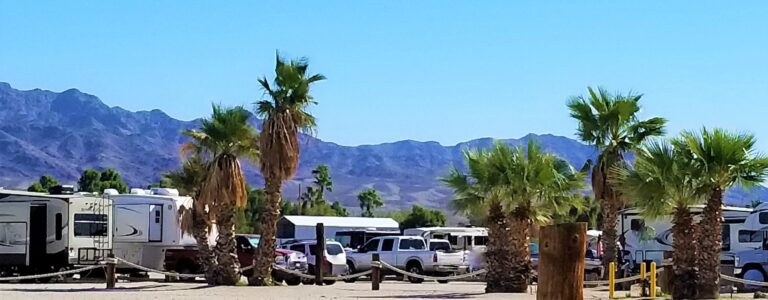Entering the world of recreational vehicles (RVs) can be both exciting and overwhelming for newcomers. With a whole new language to learn, it’s essential to familiarize yourself with common RV terminology so that you can make informed decisions and communicate effectively with fellow RVers. In this comprehensive beginner’s guide, we’ll decode the jargon of the RV world and provide clear explanations for some of the most common terms you’ll encounter.
1. Types of RVs
- Class A Motorhomes: These large, bus-like motorhomes are built on heavy-duty chassis and provide a spacious and luxurious living space. They are ideal for long trips or full-time living and often feature slide-outs to increase the interior space.
- Class B Motorhomes: Also known as camper vans, Class B motorhomes are the smallest of the motorized RVs. They are built on a van or panel truck chassis and have a compact living space that usually includes basic amenities like a bed, kitchenette, and bathroom.
- Class C Motorhomes: Class C motorhomes are built on a truck or van chassis and have a cab-over design, which provides additional sleeping or storage space above the cab. They offer a good balance between size and functionality, making them popular among families.
- Travel Trailers: These towable RVs come in various sizes and styles, from small teardrop trailers to large fifth-wheel trailers. They are designed to be towed by a pickup truck, SUV, or in some cases, a car.
- Fifth Wheel Trailers: A type of towable RV that connects to the bed of a pickup truck using a special hitch called a fifth-wheel hitch. They typically offer more living space and storage than travel trailers, making them popular among full-timers.
2. RV Components and Systems
- Chassis: The frame or structure that supports the RV’s body and components. In motorized RVs, the chassis includes the engine, transmission, and suspension system.
- Slide-Out: A section of the RV that can be extended outward to increase the interior living space. Slide-outs are common in larger RVs, such as Class A motorhomes and fifth-wheel trailers.
- Holding Tanks: RVs have three types of holding tanks: fresh water (for storing potable water), gray water (for wastewater from sinks and showers), and black water (for waste from the toilet). These tanks need to be monitored and emptied regularly.
- Hitch: The device used to connect a towable RV to the towing vehicle. There are several types of hitches, including the ball hitch (used for most travel trailers) and the fifth-wheel hitch (used for fifth-wheel trailers).
- Leveling System: A system designed to level the RV when parked, ensuring a stable and comfortable living environment. Some RVs have manual leveling systems that require the use of leveling blocks or jacks, while others have automatic leveling systems.
3. RV Appliances and Amenities
- Galley: The kitchen area of an RV, which typically includes a stove, refrigerator, sink, and storage cabinets.
- Wet Bath: A compact bathroom design found in smaller RVs, where the shower, toilet, and sink share the same space. When using the shower, the entire bathroom gets wet, hence the name.
- Dry Bath: A bathroom design where the shower, toilet, and sink are separate, similar to a traditional home bathroom. Dry baths are usually found in larger RVs.
- Converter: An electrical device that converts 120-volt AC power from a campground or generator to 12-volt DC power, which is used to charge the RV’s batteries and power the 12-volt appliances and systems.
- Inverter: An electrical device that converts 12-volt DC power from the RV’s batteries to 120-volt AC power, allowing you to run household appliances like microwaves and air conditioners without being connected to shore power or using a generator.
4. RV Operations and Maintenance
- Dry Camping: Camping without hookups for water, electricity, or sewer. Also known as boondocking or off-grid camping.
- Full Hookups: A campsite that provides connections for water, electricity, and sewer. These sites make RVing more comfortable and convenient, as you can use all of your RV’s systems and appliances without worrying about conserving resources.
- Dump Station: A facility where RVers can empty their gray and black water holding tanks. Dump stations are often found at campgrounds, rest areas, and some gas stations.
- Shore Power: Electricity provided by a campground or other facility when you plug your RV into an electricaloutlet, allowing you to use the 120-volt AC appliances and systems without relying on your batteries or generator.
- Winterizing: The process of preparing your RV for cold weather storage, which includes draining the water systems, adding antifreeze, and protecting the RV’s interior and exterior from potential damage caused by freezing temperatures.
5. RV Lifestyle and Travel
- Full-Timer: A person who lives in their RV year-round, either by choice or necessity. Full-timers often travel frequently, exploring different parts of the country or pursuing a location-independent lifestyle.
- Snowbird: An RVer who travels to warmer climates during the winter months to escape cold weather in their home region. Snowbirds often have a fixed residence in addition to their RV and may spend several months in one location before moving on.
- Workamping: A combination of the words “work” and “camping,” workamping refers to RVers who work part-time or full-time jobs while traveling and living in their RV. Workamping positions can range from campground hosting to seasonal employment in various industries.
- Boondocking: A term used to describe dry camping or camping without hookups, often in remote or undeveloped areas. Boondocking allows RVers to enjoy a more self-sufficient and off-grid lifestyle, but it also requires careful planning and resource management.
- RV Park: A commercial campground designed specifically for RVs, offering various amenities such as full hookups, laundry facilities, and recreational areas. RV parks can range from basic to luxury, with prices and amenities varying accordingly.
By familiarizing yourself with these common RV terms, you’ll be better equipped to navigate the world of RVing and communicate with fellow RV enthusiasts. As you continue to learn and explore, you’ll likely encounter even more jargon specific to your RV type or preferred travel style. Embrace the learning process and enjoy the journey as you delve deeper into the exciting and rewarding world of RVing.






